There were rounds of applause from Chinese netizens after the supposedly powerful and invincible U.S. Navy plunged into crisis. The collision of USS John S. McCain with an oil tanker Alnic MC east of Singapore early Monday was the second of such incident after the USS Fitzgerald collided with a container ship off the coast of Japan on June 17.
While it was a huge embarrassment to the U.S. Navy, the collision of two destroyers has provided Global Times – an English-language Chinese newspaper – the opportunity to rubbing salt into the wound. The media said the celebration of the U.S. Navy’s accidents reflects the sentiment of Chinese society toward the activities of the U.S. Navy in the South China Sea.
However, the media was careful to emphasize that the missing and injured US sailors deserve sympathy. So far, in addition to 5 injured, some remains of 10 missing U.S. sailors have been found in the sealed compartments aboard the McCain, a U.S. Navy destroyer named after Senator John McCain’s father and grandfather, both of whom were Navy admirals.
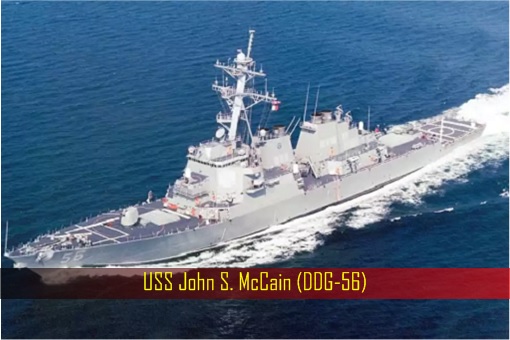
USS John S. McCain is one of 84 US warships equipped with the Aegis missile defense system, which could be mobilized to counter any of North Korean missile launches. The warship was heading to Singapore for a routine port call, when the collision occurred and tore a hole in the warship’s waterline, flooding compartments that included a crew sleeping area.
The collision has sparked a crisis of confidence, so much so that the U.S. Navy has imposed a global suspension – a rare “operational pause” – to re-evaluate its fleet. Effectively, it would involve a staggered day-long stand-down to check safety measures, include looking at “operational process, trends in personnel, material, maintenance and equipment.”
USS Fitzgerald almost sank off the coast of Japan after colliding with a Philippine container ship 2 months ago. Seven U.S. sailors were killed and their bodies were found in a flooded berthing area in that collision. In fact, the collision involving the USS John S. McCain was the 4th major accident within the US Pacific Fleet this year alone.
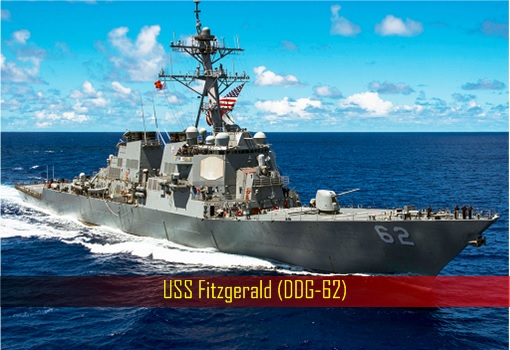
A month prior to the June accident involving USS Fitzgerald, a South Korean fishing vessel collided with the guided missile cruiser Lake Champlain. In January, another guided-missile cruiser – Antietam – damaged its propellers while anchoring in Tokyo Bay. Admiral John Richardson has conveniently blamed “cyber intrusion or sabotage” for the collisions.
However, the U.S. Navy has found no evidence of a hacking at this point. Coincidently, the U.S. 7th Fleet would go against the China Navy in the South China Sea, should a war break between both nations. But instead of suspecting Chinese hackers, the problem could be due entirely on internal issues with the U.S. Navy, as described by the Global Times.
The Chinese media said the two severe collisions within 2 months show that the US Navy’s combat readiness level and military management level have both declined. It claims that the U.S. Navy has behaved arrogantly in the Asia-Pacific region. U.S. Navy’s lack of respect for huge merchant ships and failure to take evasive action in time has, therefore, resulted in serious accidents.
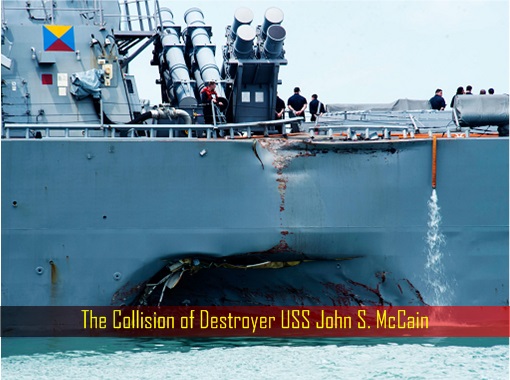
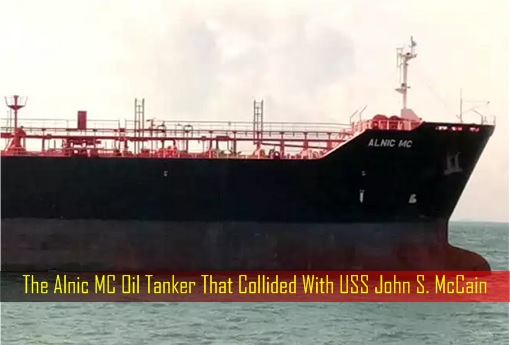
Prior to the collision, the USS John S. McCain sailed within 12 nautical miles of an artificial island built by China in the South China Sea – the latest operation to counter what the United States sees as China’s efforts to control the waters. The Chinese newspaper said that the accidents happened partly because U.S. warships patrol too frequently in the Asia-Pacific.
The Chinese lectured that if the U.S. Navy wants to keep its frequent presence in the waters, it needs to get familiar and interact with these merchant ships, which requires huge expenditure. Essentially, China suggests that the U.S. Navy has chosen to proceed with risky military activities in the region despite having tight funding, hence the lack of full preparation.
The oil tanker Alnic MC told Reuters there was no oil spilt from the Liberian-flagged, 183 metre-long tanker, which was carrying almost 12,000 tonnes of fuel oil from Taiwan to discharge in Singapore. Ben Stewart, commercial manager of Maritime Asset Security and Training in Singapore, said early indications suggested the USS John S. McCain may have turned across the front of the tanker – a rare manoeuvre.
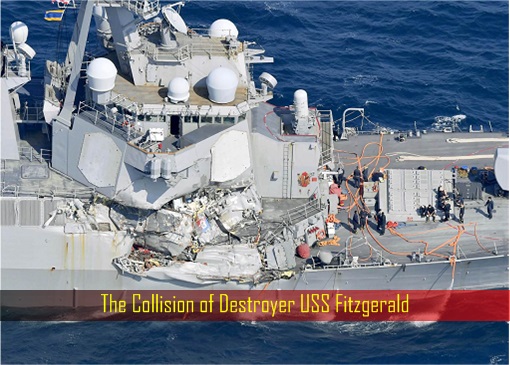
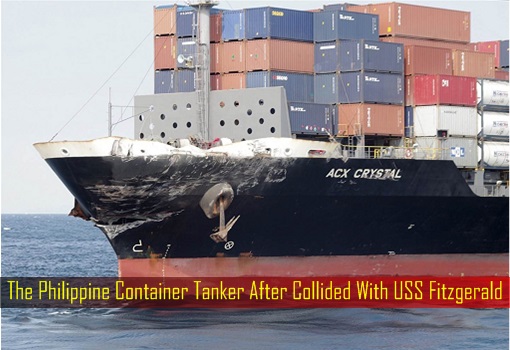
On June 17, despite relatively calm sea and unrestricted visibility, USS Fitzgerald somehow couldn’t avoid the bow of the container ship, the Philippine-flagged ACX Crystal, from slamming into it. Theoretically, radar officers working on the bridge and combat information centre below the U.S. destroyer “should have spotted the freighter’s image on their screens.”
In both incidents, clearly human errors, negligence or simply lack of preparedness plays a major part. The fact that top three leaders aboard the USS Fitzgerald were removed from duty – Captain Bryce Benson, Commander Sean Babbitt and Master Chief Petty Officer Brice Baldwin – proves that the U.S. Navy has serious problems with the quality of leadership and the quality of training that commanders have gotten.
Here’s another proof that hacking plays no role in the collisions at all. The U.S. Navy has decided that effective Wednesday (23rd August, 2017), the commander of the United States 7th Fleet – Vice Admiral Joseph Aucoin – a three-star commander based in Yokosuka, Japan, will be relieved of command. He will be replaced by Admiral Phillip Sawyer.

Another Beijing mouthpiece, China Daily, has also mocked the U.S. Navy – “It may be hard for people to understand why US warships are unable to avoid other vessels since they are equipped with the world’s most sophisticated radar and electronic tracking systems, and aided by crew members on constant watch.”
The China Daily pointed to the fact that according to the Philippine container ship’s captain, it signalled with flashing lights after the USS Fitzgerald “suddenly” appeared on a course to cross its path. Yet the U.S. warship did not respond or take evasive action. The newspaper said the U.S. has turned its so-called “freedom of navigation” in the South China Sea to an “increasing hindrance to ships sailing in Asian waters.”
While the U.S. Navy called it “poor seamanship and flaws in keeping watch”, the Chinese claimed it was due U.S. Navy’s arrogance for sailing without observing maritime traffic rules, not to mention the sloppiness of the U.S. Navy’s crews. Reminding the U.S. that the South China Sea is not the U.S. Navy’s Bermuda Triangle, the U.S. Navy was told to go back to the drawing board for its inability to adapt.
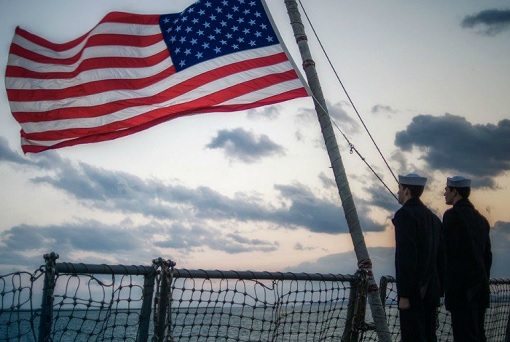
Other Articles That May Interest You …
- China’s Tactic Works! – North Korea Chickens Out, Calls Off Guam Missile Attack
- China Has Spoken – If US-South Korea Strikes North Korea, We Will Defend Kim
- The Dragon Has Landed – China Kick-Off Defence Triangle Via ECRL Malaysia
- Forget South China Sea, China Is Dominating Indian Ocean – And India Isn’t Happy
- How China Brilliantly Uses North Korea To Get What They Want From Trump
- Get Ready For China’s Warplanes On Artificial Islands In South China Sea
- Tactical Error – THAAD Deployment Means US-South Korea VS China-Russia
- Tribunal: No Basis To China’s South China Sea Claim, But Who Dares To Enforce It?
- Why China Can “Take” Any Island In South China Sea … And Get Away

|
|
August 23rd, 2017 by financetwitter
|


|

|

|

|

|

|




























Comments
Add your comment now.
Leave a Reply